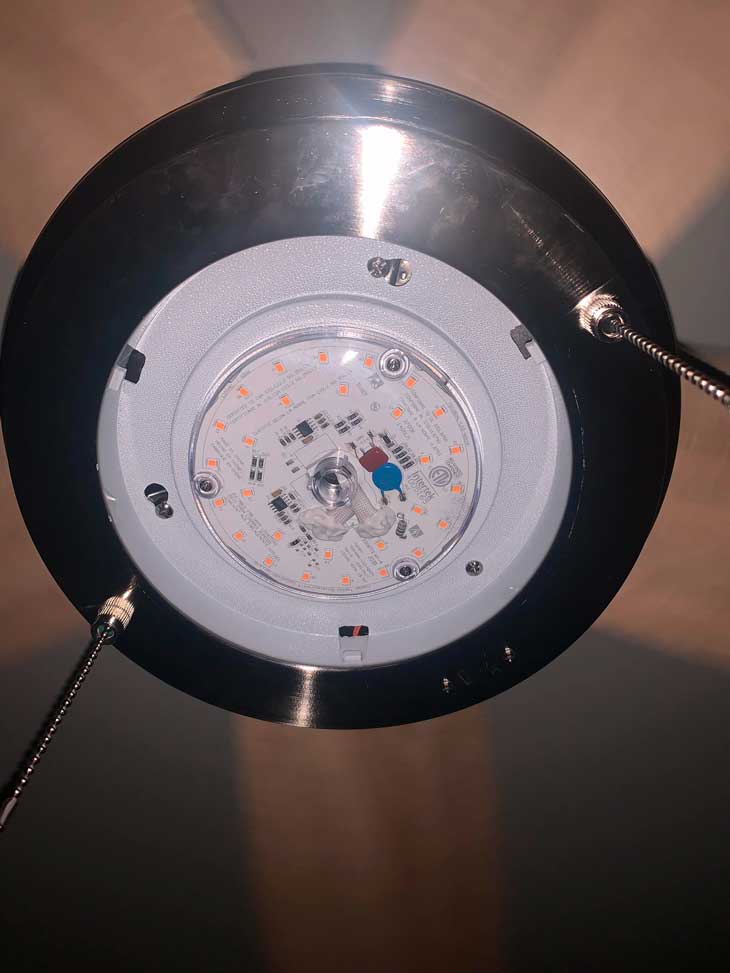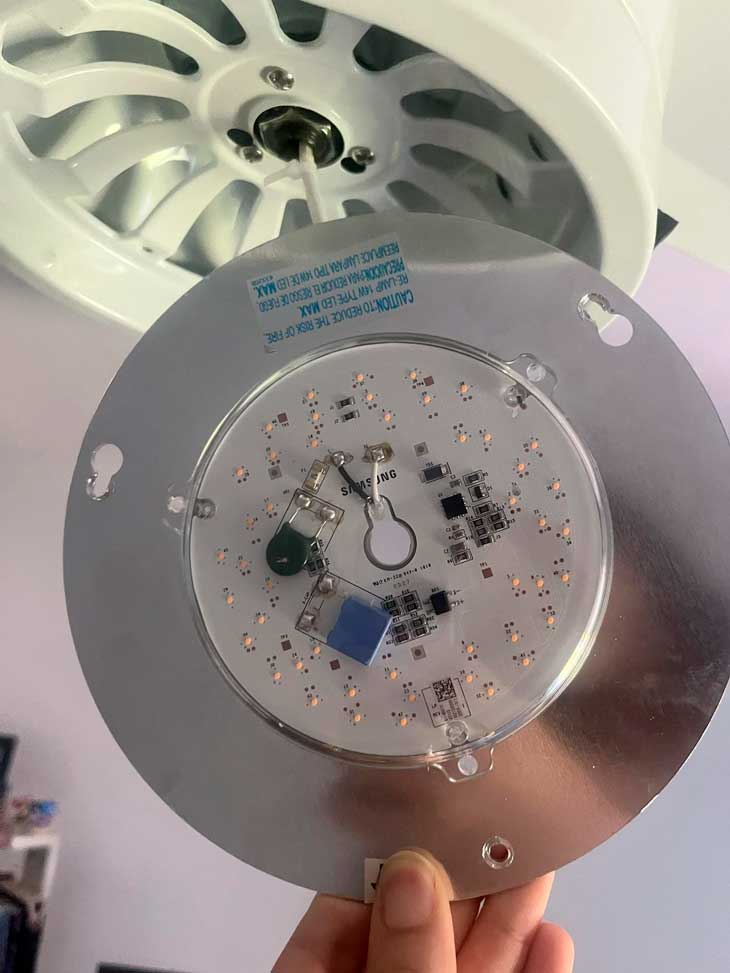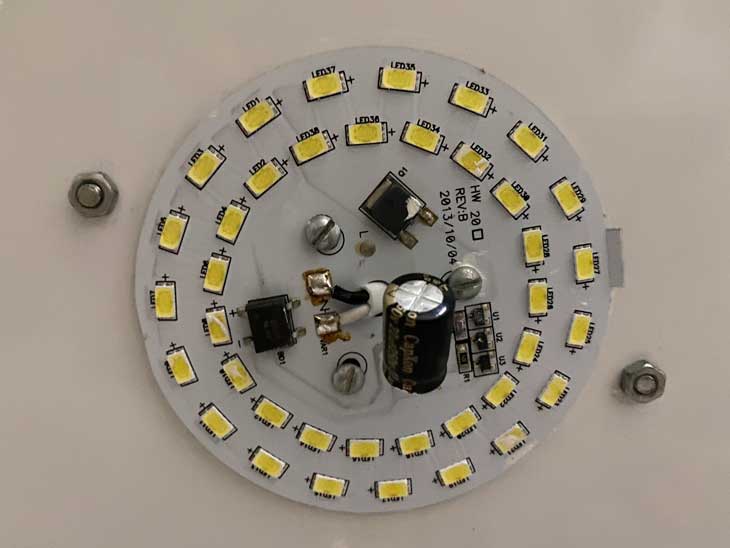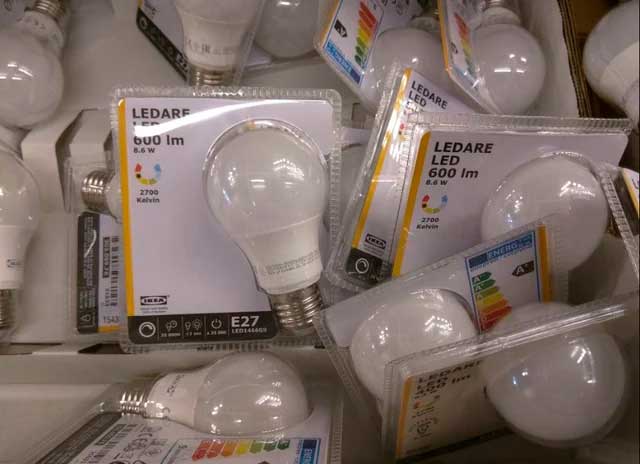Integrated LED lights are renowned for their exceptionally long lifespan, but even the most durable models eventually reach the end of their service life.
When a diode within an LED fixture fails, can it be effortlessly swapped out like a conventional light bulb? In most cases, replacing individual diodes in integrated LED lights proves to be a challenging endeavor.
Unless the light unit itself can be separated from the fixture or housing, generally, opting to replace the entire unit is the more cost-effective solution, as the repair process typically entails the intricate task of detaching and soldering new LEDs onto the circuit board.
This article will delve into the reasons behind the difficulty of replacing integrated LEDs and offer insights into integrated LEDs within ceiling fans. Continue reading to determine if these less replaceable fixtures are still a wise investment.
What is an Integrated LED Lighting Fixture?

What most of us recognize is the conventional LED bulb that you twist into a light fixture. In this setup, the bulb and the fixture are distinct components.
However, when it comes to integrated LED lighting fixtures, you have a unified unit in which the LED bulb is incorporated into the fixture itself.
This differs from LED-ready fixtures, where the diodes come with predetermined color temperatures and lumen outputs. In integrated LED fixtures, these diodes are directly linked to the mainline voltage, eliminating the need for additional accessories or components.
If you are acquainted with LED lighting, you are likely aware of its energy efficiency. The same principle applies to integrated LED lighting, helping you reduce your energy expenses.
Are Integrated LED Lights Replaceable?

Integrated LED lights employ diodes integrated into electrical circuit boards rather than traditional bulbs, which renders them challenging to disassemble for individual light replacements.
Instead, they are engineered with the intention that when they eventually cease functioning, you will replace the entire fixture. However, does this imply that you must discard an integrated LED fixture once it malfunctions?
Not necessarily. Your initial course of action should be to inspect the warranty. Manufacturers recognize the exceptional longevity of LED bulbs, often providing extended warranty periods compared to those for standard retrofit LEDs.
What Makes an Integrated LED Bulb Hard to Replace?
An integrated LED light fixture incorporates an LED array within the fixture itself, rather than relying on a traditional bulb. These LED arrays consist of flat circuit boards with embedded light-emitting diodes.
In theory, it is possible to address a malfunctioning light when one of the diodes eventually fails. To do so, you would need to open the fixture to gain access to the LED array and then, using a soldering iron, replace the faulty diode with a new one.
However, this approach is practical primarily when dealing with a single defective LED on the circuit board. If the LED module has multiple malfunctioning LEDs, it is often more cost-effective to replace the entire fixture.
Purchasing a new LED array to install in the existing fixture usually does not make financial sense, as the fixtures themselves are not prohibitively expensive.
It is important to note that attempting to replace diodes on integrated bulbs is a challenging task, best undertaken by individuals with soldering experience. It's a delicate job, and unless you are adept at working with small and intricate electrical circuit boards, you may inadvertently damage the fixture rather than fixing it.
The Process of Replacing LED Lights

This guide underscores crucial considerations to bear in mind when replacing integrated LED bulbs. Evaluation and Preparation: Begin by thoroughly assessing the situation and gathering essential information. Identify the LED lighting type, specifications, and consult any documentation or instructions provided by the manufacturer.
Disassembly
For different devices or light fixtures, exercise caution while disassembling them, adhering to the manufacturer's guidelines. Utilize appropriate tools and techniques to prevent any harm to surrounding components.
LED Removal
Once you have gained access to the integrated light fixtures, you may need to desolder or detach them from the circuit board. Follow proper soldering and desoldering procedures, handling the LED delicately to prevent any damage.
Replacement LED Selection
When selecting a replacement LED, ensure it aligns with the specifications of the original LED bulb, including size, voltage, current, and color temperature. Consider procuring replacements from reputable suppliers to guarantee quality.
LED Installation
Thoughtfully install the light bulbs, adhering to recommended procedures. Ensure correct polarity alignment and secure the light bulbs in place using suitable methods, such as soldering or appropriate fastening mechanisms.
Testing and Reassembly
Following the replacement of the integrated light bulb, reassemble the device or fixture. Before finalizing the reassembly, test the light bulb's functionality to ensure it functions as intended.
Challenges and Considerations

Non-replaceable Design: In certain instances, an integrated fixture is intentionally engineered to be non-replaceable, often due to space constraints, design preferences, or cost considerations.
Attempting to substitute such LEDs may necessitate extensive modifications or prove impractical. Component Compatibility: Integrated fixtures may have specific compatibility prerequisites with surrounding components, such as drivers or heat sinks.
Ensuring compatibility is paramount to avert issues related to performance, longevity, or safety. Specialized Equipment: Replacing integrated LEDs often mandates specialized equipment like soldering irons, desoldering stations, or heat guns. Investing in these tools may become necessary if you intend to replace integrated LEDs frequently.
Safety Precautions
While working with integrated LEDs, adherence to safety precautions is essential to prevent electrical shocks, burns, or harm to the device. Disengage power sources, employ appropriate protective gear, and operate in well-ventilated environments.
Compatibility with Traditional Light Bulbs
Integrated LEDs are not inherently compatible with traditional incandescent or CFL bulbs. Adapting an entire fixture designed for traditional bulbs to accommodate integrated LEDs may necessitate alterations or the use of LED-ready fixtures.
Retrofit LED Solutions
Unlike retrofit LEDs, which can be easily fitted into existing light fixtures designed for traditional bulbs, replacing integrated LEDs entails more intricate procedures.
Retrofit LEDs typically comprise an LED array and a separate driver, facilitating easier replacement and compatibility with traditional fixtures.
Specific Applications
Certain fixtures, such as track lights, may feature distinctive designs or constraints that render the replacement of integrated LEDs more challenging.
Consider seeking advice from a professional or the manufacturer for guidance tailored to the specific application.
Energy Efficiency
A significant advantage of integrated LEDs is their energy efficiency. When replacing the LED fixture, it is vital to choose replacements that uphold or enhance the energy efficiency of the fixture or device.